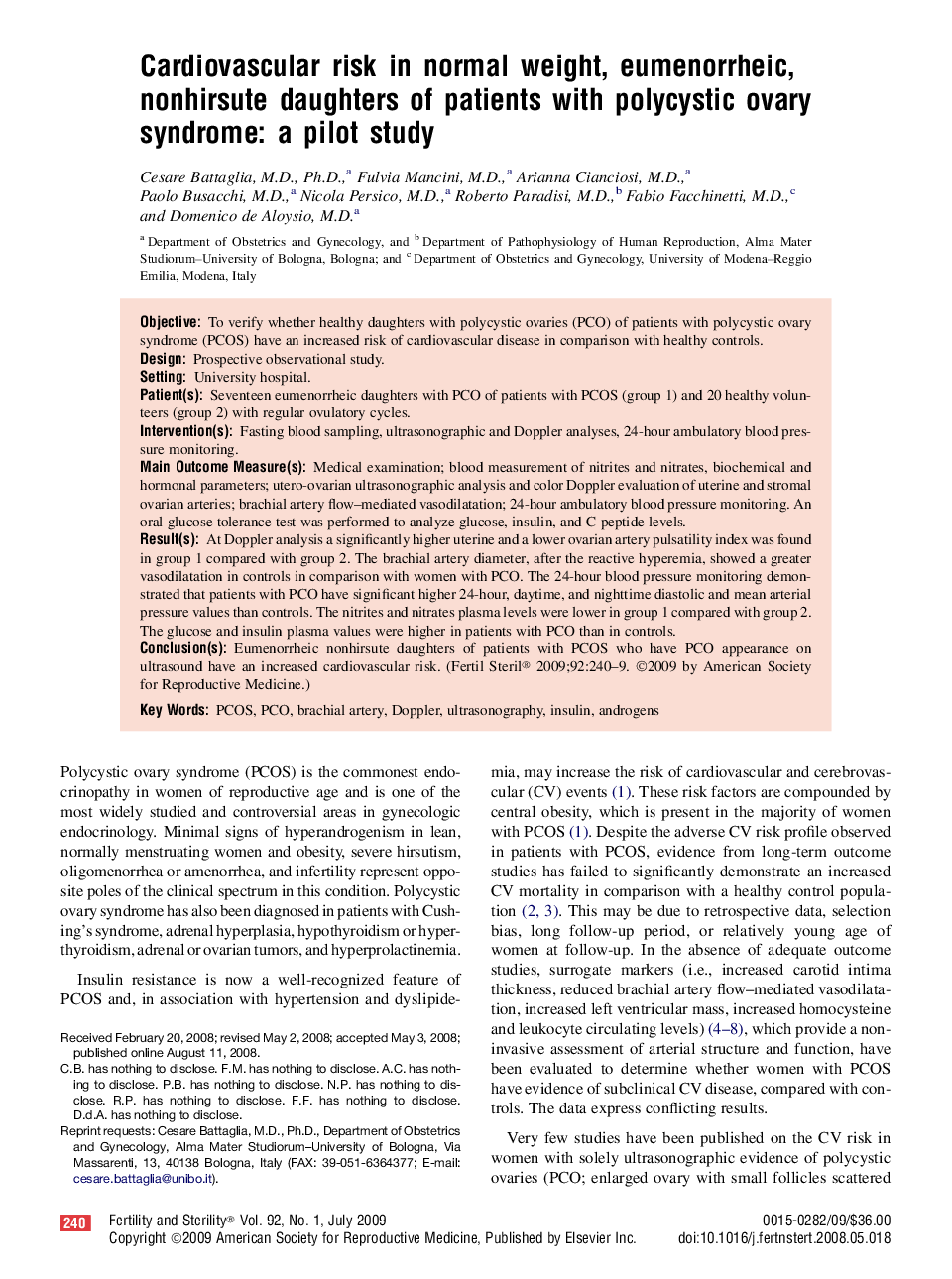| Article ID | Journal | Published Year | Pages | File Type |
|---|---|---|---|---|
| 3936868 | Fertility and Sterility | 2009 | 10 Pages |
ObjectiveTo verify whether healthy daughters with polycystic ovaries (PCO) of patients with polycystic ovary syndrome (PCOS) have an increased risk of cardiovascular disease in comparison with healthy controls.DesignProspective observational study.SettingUniversity hospital.Patient(s)Seventeen eumenorrheic daughters with PCO of patients with PCOS (group 1) and 20 healthy volunteers (group 2) with regular ovulatory cycles.Intervention(s)Fasting blood sampling, ultrasonographic and Doppler analyses, 24-hour ambulatory blood pressure monitoring.Main Outcome Measure(s)Medical examination; blood measurement of nitrites and nitrates, biochemical and hormonal parameters; utero-ovarian ultrasonographic analysis and color Doppler evaluation of uterine and stromal ovarian arteries; brachial artery flow–mediated vasodilatation; 24-hour ambulatory blood pressure monitoring. An oral glucose tolerance test was performed to analyze glucose, insulin, and C-peptide levels.Result(s)At Doppler analysis a significantly higher uterine and a lower ovarian artery pulsatility index was found in group 1 compared with group 2. The brachial artery diameter, after the reactive hyperemia, showed a greater vasodilatation in controls in comparison with women with PCO. The 24-hour blood pressure monitoring demonstrated that patients with PCO have significant higher 24-hour, daytime, and nighttime diastolic and mean arterial pressure values than controls. The nitrites and nitrates plasma levels were lower in group 1 compared with group 2. The glucose and insulin plasma values were higher in patients with PCO than in controls.Conclusion(s)Eumenorrheic nonhirsute daughters of patients with PCOS who have PCO appearance on ultrasound have an increased cardiovascular risk.
